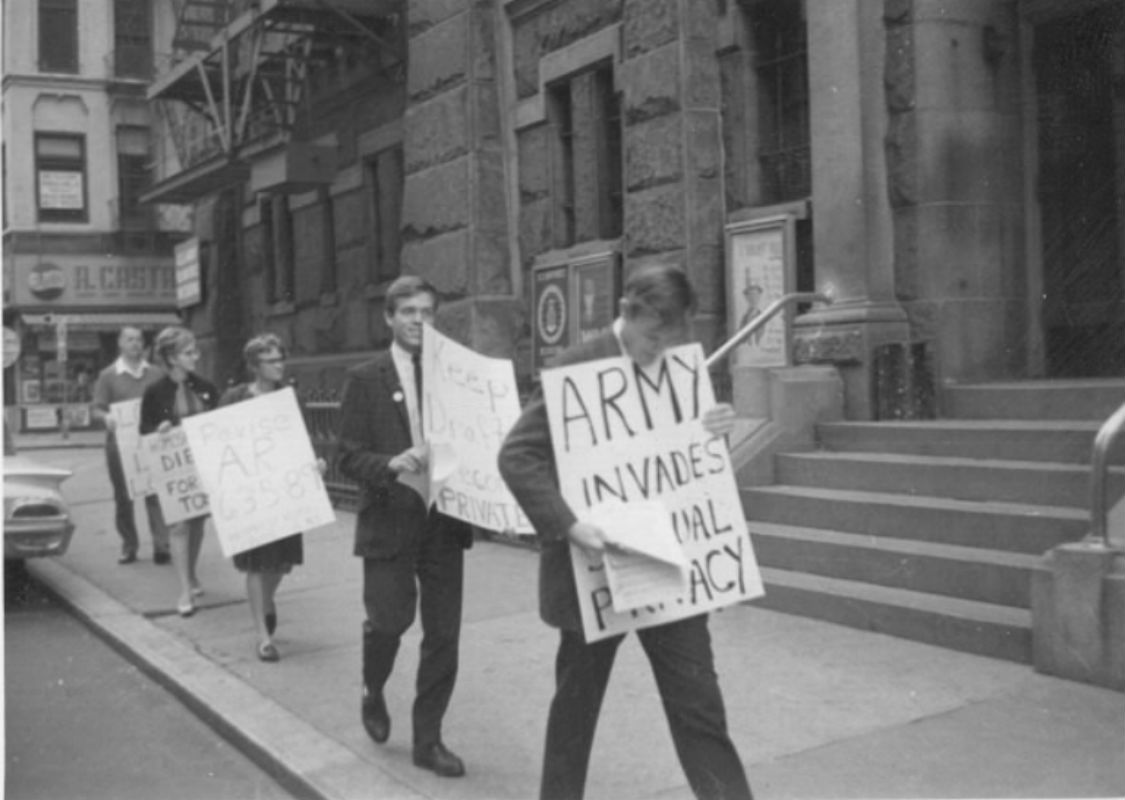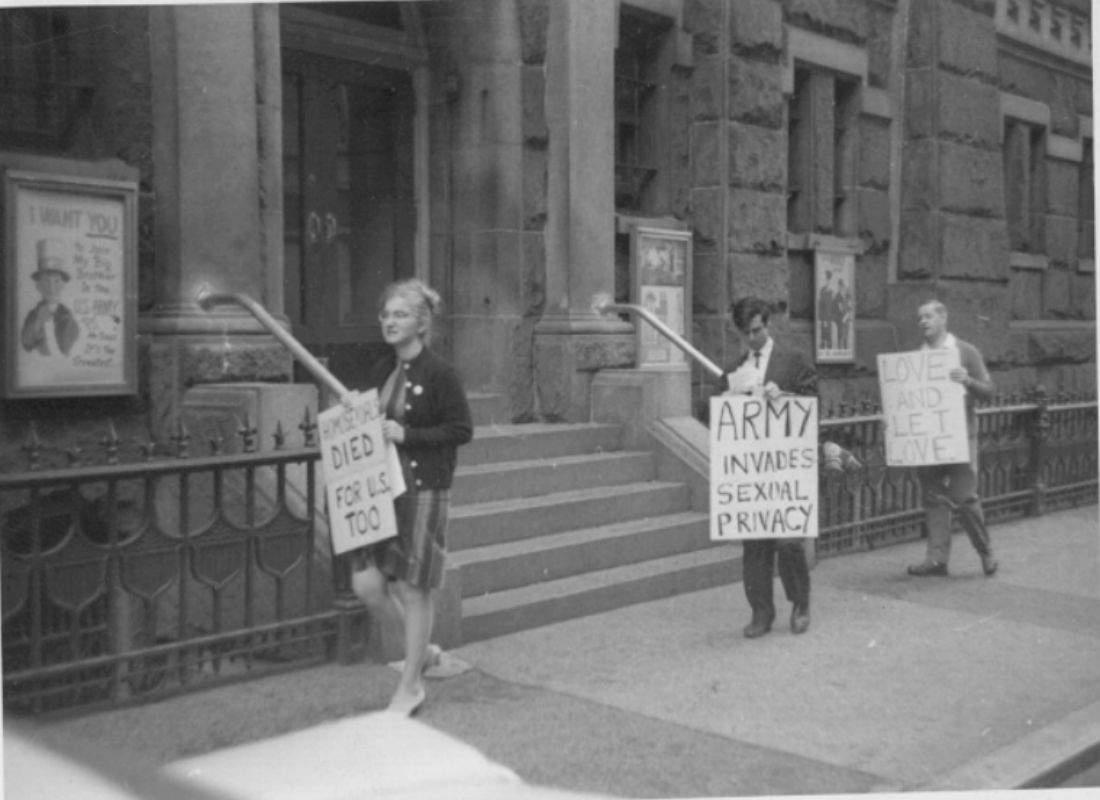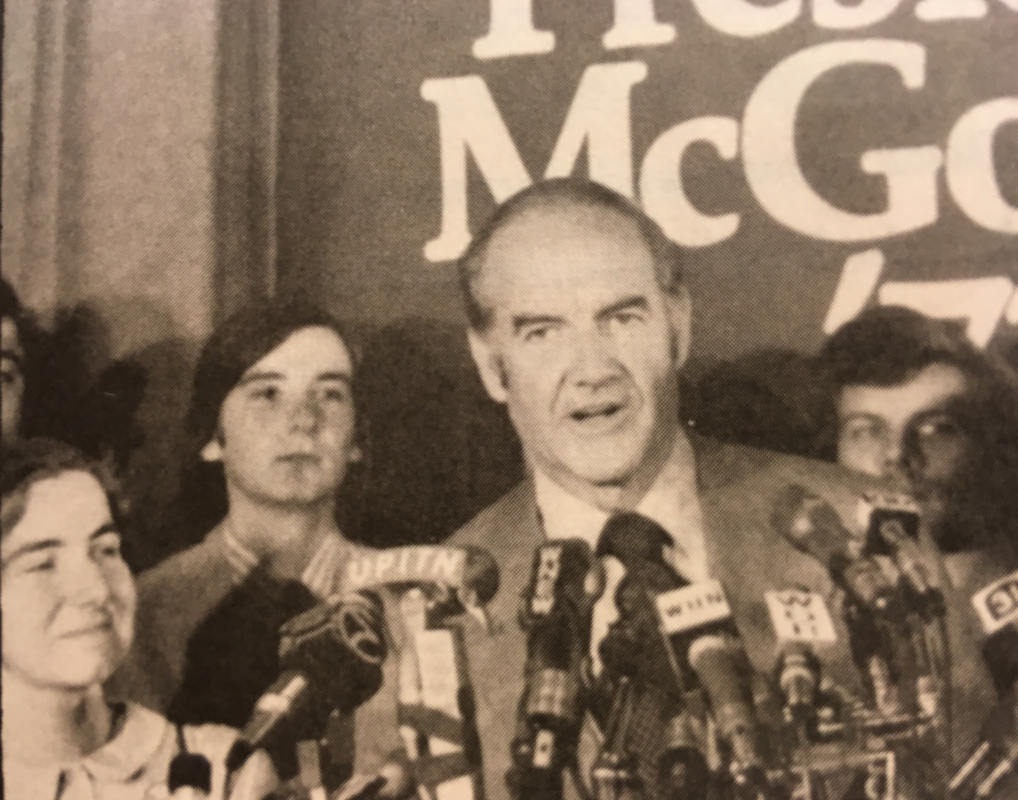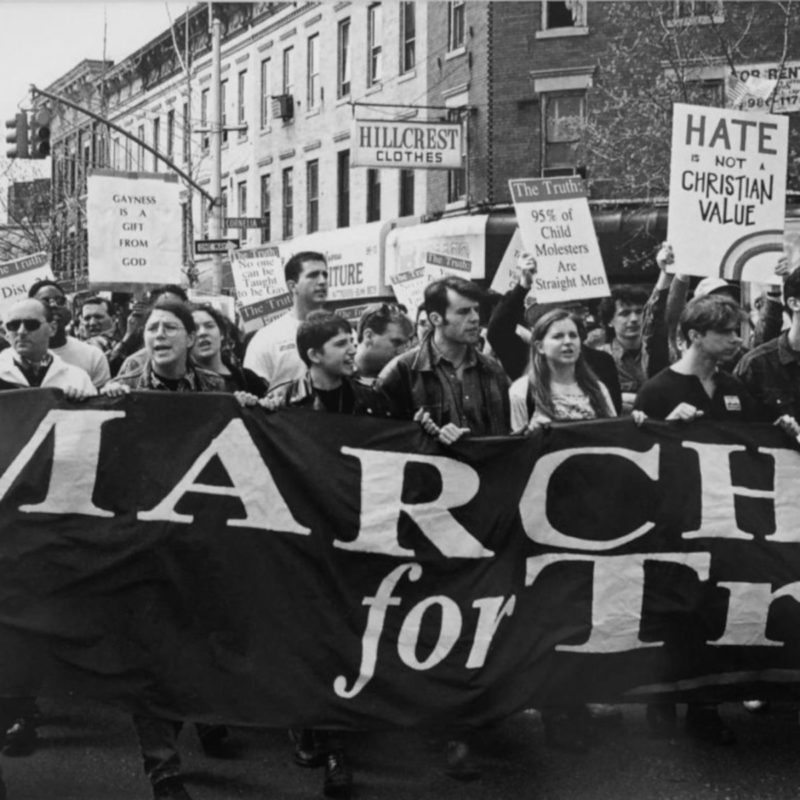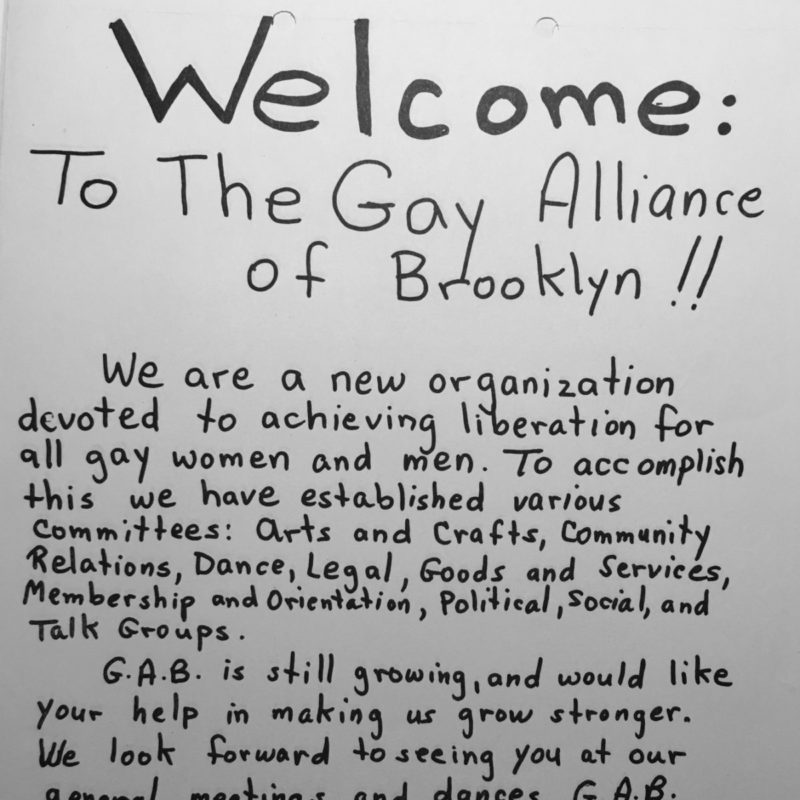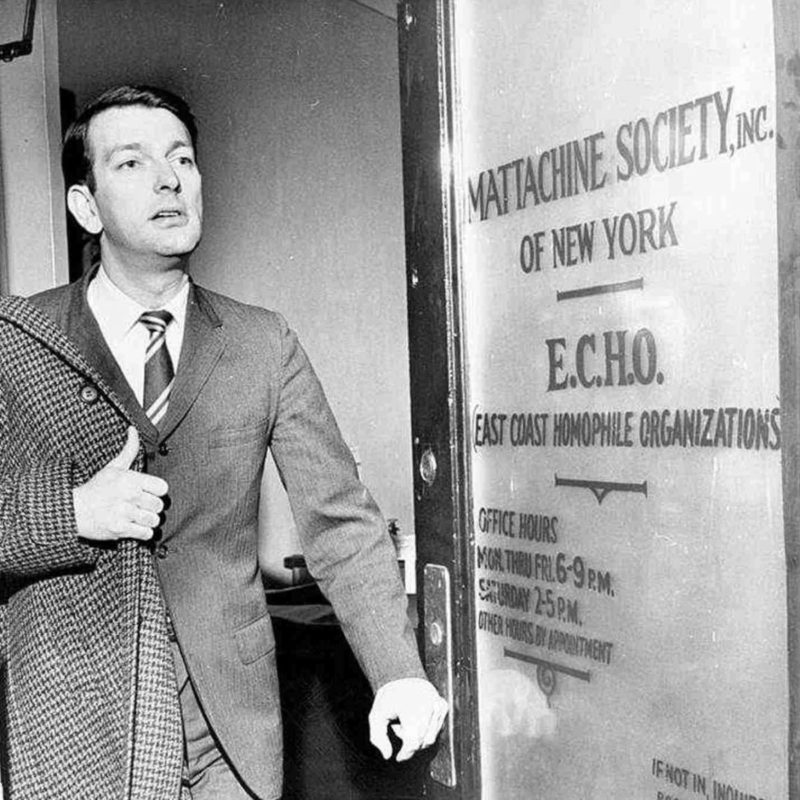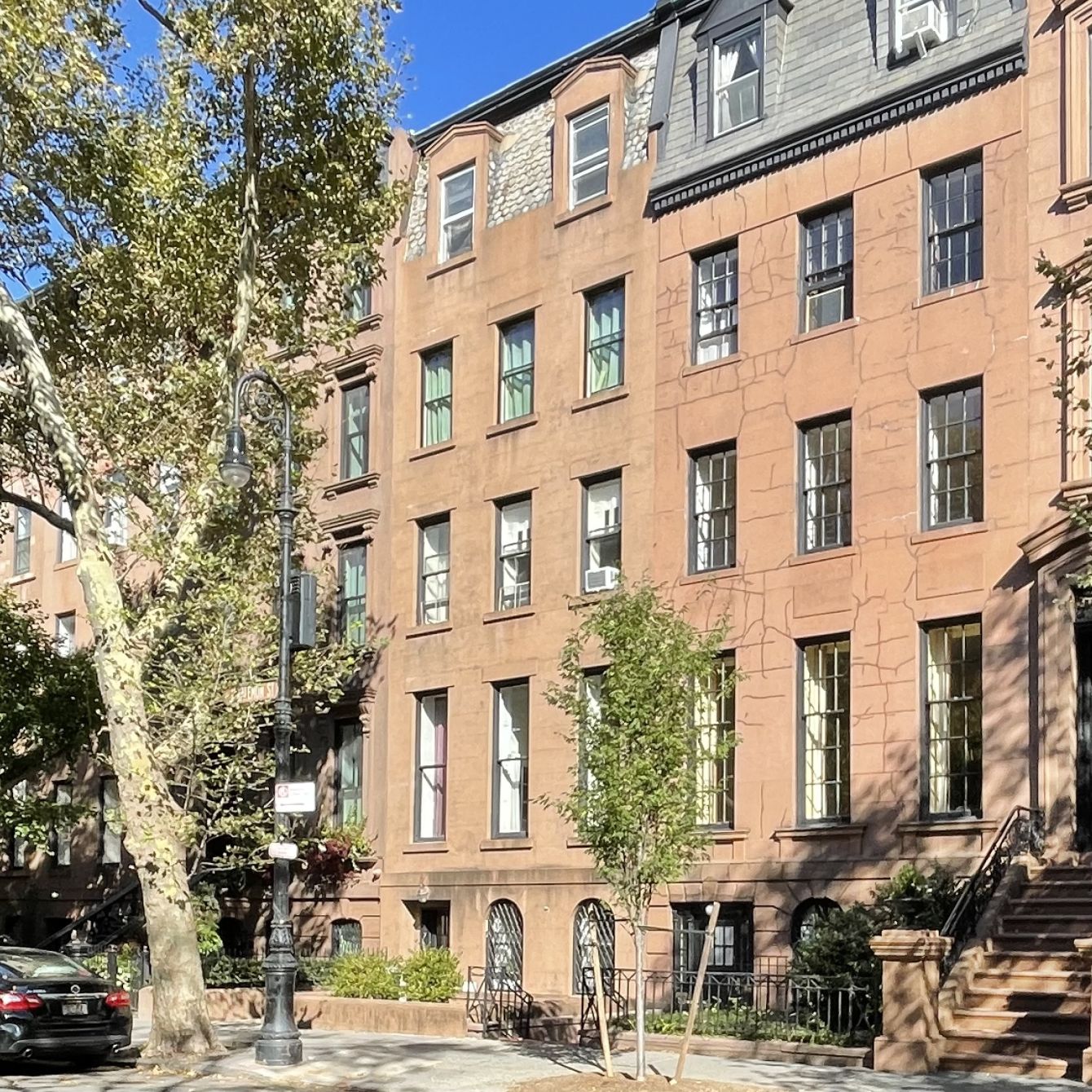
Renée Cafiero & Nancy Garden Residence
overview
Pre-Stonewall gay rights activists Renée Vera Cafiero and Nancy Garden moved to an apartment in this building in December 1964, shortly after participating in the very first public demonstration for gay rights in the United States, at the U.S. Army Building in Manhattan.
While living here, they remained active in the Daughters of Bilitis and Mattachine Society and took part in the pioneering actions organized by Mattachine and the East Coast Homophile Organizations (ECHO) in New York, Philadelphia, and Washington, D.C.
History
Nancy Garden (1938-2014) and Renée Cafiero (Renée Vera Pachter Cafiero; b. 1943) met in 1964. During the summer of 1964 Cafiero joined the Mattachine Society (MSNY) and brought Garden into the group. Both were also members of the Daughters of Bilitis (DOB). Although there were only a few other women, they preferred MSNY because of its political activism.
At MSNY, Garden “worked on the newsletter and on writing a pamphlet for distribution to gays who went to bars; the pamphlet explained how to behave and what to say — and not say — if one was arrested.” Cafiero served on the Young Adults Committee headed by Craig Rodwell and was program chairman, in charge of finding speakers for meetings from about 1965 to 1967.
On September 19, 1964, they joined Rodwell in representing MSNY in a demonstration organized by activist Randy Wicker at the U.S. Army Induction Center on Whitehall Street in Manhattan to protest the army’s discrimination against gays and practice of disclosing draft records to employers. They were the only women in the group and were very nervous because, as Garden later wrote, they “had no idea what to expect.” They handed out flyers titled “The Army Invades Sexual Privacy,” and Cafiero carried a picket sign declaring “Homosexuals Died for U.S. Too.” Afterwards, they “felt a little let down because it had been so uneventful, but also triumphant, since … it was after all, the first gay picket.”
That first demonstration gave gay activists the confidence to organize further actions. During the next few years Garden and Cafiero took part in protests in Washington, D.C., organized by the East Coast Homophile Organizations (ECHO), as well as the group’s Reminder Day protests in front of Independence Hall, which occurred annually from 1965 to 1969. They remained friends with Rodwell, and when he quit MSNY in 1967 to open the Oscar Wilde Memorial Bookshop, they were part of the work crew who helped him set up the store.
Garden and Cafiero lived in this building until 1967 when they moved to 164 Hicks Street in Brooklyn Heights. They broke up in 1969, after Garden got back together with her first girlfriend, Sandra Scott. Garden and Scott moved to 16 Warren Place in Cobble Hill, where Garden began the first drafts of her groundbreaking young adult novel Annie on My Mind.
Cafiero continued to live at 164 Hicks Street until 1989, when she moved to Park Slope. In 1971 she was one of the founders and later the secretary and a spokesperson for the Gay Alliance of Brooklyn. In 1972 she was an alternate delegate for George McGovern at the Democratic Convention, one of five openly gay delegates nationwide who lobbied unsuccessfully for a gay rights plank in the convention platform. During the 1970s and 1980s, Cafiero was active in the West Brooklyn Independent Democrats. A union officer, she was instrumental in crafting the United Auto Workers sexual orientation anti-discrimination contract language in the 1980s. A longtime member of Lambda Independent Democrats (founded in 1978, now the largest LGBT political organization in Brooklyn), she has devoted most of her political energies to that organization since 1989 and is currently its corresponding secretary.
Entry by Gale Harris, project consultant (May 2019), and made possible by the New York State Council on the Arts with the support of Governor Andrew M. Cuomo and the New York State Legislature.
NOTE: Names above in bold indicate LGBT people.
Building Information
- Architect or Builder: E.H. Day (original house)
- Year Built: 1870; converted to apartments, stoop and original details removed, 1947
Sources
Betsy Kuhn, “Nancy Garden and the Whitehall Picket, 1964,” Bonus Features: Books and Writing, bit.ly/2LmAPc5. [source of both Garden quotes]
Fred Wasserman, “Brooklyn Lesbian and Gay History Exhibition Project Notes, “[Compiled for the Brooklyn Historical Society, 1993-1994], 48-49.
Mattachine Society, Inc. of New York, Topical File, Program Committee, Manuscripts and Archives Division, New York Public Library, reel 14, box 5, folder 14.
Nancy Garden, Annie on My Mind (1982; rpt. ed. with 2007 author interview by Kathleen T. Horning, New York: Square Fish, 2013).
Peter Golenbock, In the Country of Brooklyn: Inspiration to the World (New York: Harper Collins, ebooks, 2008), 587-599.
Renée Vera Cafiero, phone interview and e-mails to Gale Harris/NYC LGBT Historic Sites Project, March 2019.
Do you have more information about this site?
This project is enriched by your participation! Do you have your own images of this site? Or a story to share? Would you like to suggest a different historic site?
